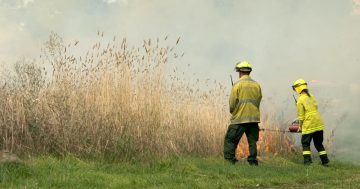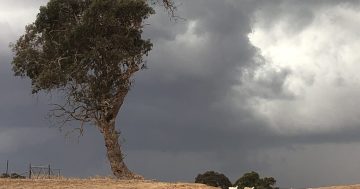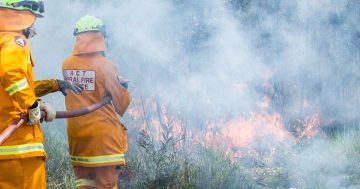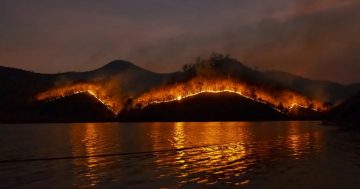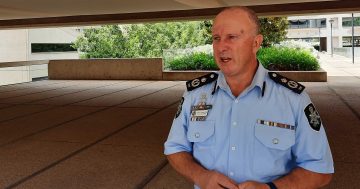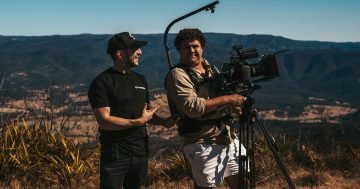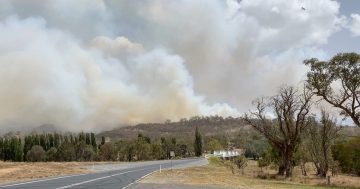
In 2003, fires swept into Canberra, destroying almost 500 homes. There are concerns that community lessons learned have been forgotten. Photo: File.
Canberrans don’t appear to be taking bushfire preparedness seriously and don’t have enough access to resources to better equip themselves for an emergency.
Community preparedness was a major concern raised during a recent public hearing for a committee inquiry into the ACT’s readiness for a bushfire.
ACT Multi-Hazard Advisory Council chair Dr Sally Troy told committee members she didn’t feel communities were adequately ready, and there seemed to be an assumption that people could draw on their experiences of the 2003 bushfires to ensure they were prepared.
“Preparation is about having the right information and the right resources,” she said.
“The ESA does its very best … but we haven’t got a systematic program for communities to do their own planning.”
Dr Troy explained Canberra’s population was very diverse and transient, meaning we couldn’t assume people who experienced the devastation 20 years ago were the same people living in the ACT now.
“That memory and that knowledge fade very quickly.”
Another issue was a lack of clear guidance about what was expected of the community and what was expected of the government in the lead-up to and during an emergency.
Dr Troy pointed to the behaviour of some Canberrans who still chose to head to the coast during the 2019/20 Black Summer bushfires even though the area was burning.
“I’m concerned about our worrying willingness to wait for government intervention,” she said.
Dr Troy argued there should be clear, accurate and timely information available, not only about an emergency that is occurring but also about good risk mitigation and management that everyone can do.
Strengthening communities was one area she felt would help people be more resilient and prepared.
“You don’t have to be the person who holds a hose … but you can be the person who organised a gathering on your street,” Dr Troy said.
She also gave examples of connecting with neighbours and volunteering in the local community to strengthen bonds.
“All those things grow knowledge and cohesiveness.”
Community preparation was also highlighted as a concern by concerned residents of Weston Creek.
Representatives Michelle Bourdet and Bill Gemmell appeared before the inquiry, voicing their concerns that the “residual trauma” of remaining residents wasn’t being mitigated.
“We have great concerns about preparedness, great concerns about the environment that we feel are neglected, and there’s a lack of awareness of what to do,” Ms Bourdet said.
She explained people didn’t seem to understand where to find information, how to prepare their community in a proactive way, where they could go in an emergency, a lack of making sure vulnerable groups had access to information, and a lack of awareness of which roads people could use to evacuate.
“You can’t get out of Weston Creek on a normal working day, let alone during an evacuation,” Ms Bourdet said.
“You’ve got this sprawl, and people are getting more and more isolated. There are no evacuation routes or transport routes for them.
“The embers will fall anywhere, and I think it’s a disaster waiting to happen.”
Several other issues were also raised during the hearing, including development on the western edge of Canberra, infrastructure planning, tracks and trails maintenance, and bushfire prevention measures.
Forestry Australia ACT and Region Committee chair Professor Peter Kanovski said over the past 20 years, investment in new technologies has appeared to be tipped in one direction over another.
“Broadly speaking, as a nation, we’re putting more and more emphasis on response rather than prevention and mitigation,” he said.
Professor Kanvoski argued climate change had reduced the number of days that fuel management practices such as planned burns could be carried out, but there also wasn’t the urgency to ensure that preparation work was done.
“There’s this cycle of forgetting after major bushfire events,” he said.
“My impression is that the level of visibility, the level of attention that [risk management] receives … is not as strong as we’d hoped it would be.”
Former ACT Parks and Conservation Service senior director of fire, forest and roads Neil Cooper agreed that the focus seemed to be on things that were visually good politically.
“There’s a lot of money spent on planes because they’re pretty … but really they’re not as effective [as they’re touted to be],” he said.












